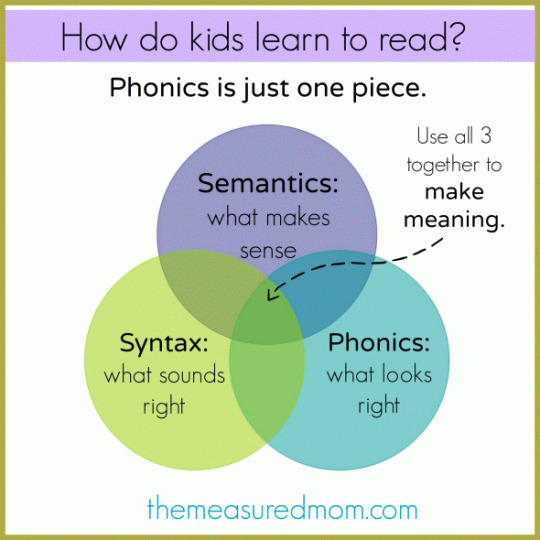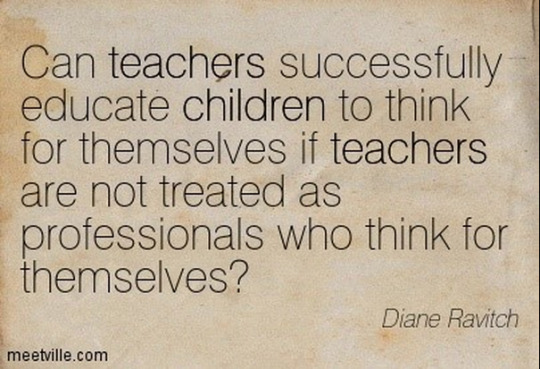Don't wanna be here? Send us removal request.
Link
#PRAISE
Praise Daniels for mentioning Eric Paulson. Also praise Eric Paulson for recognizing the importance of post-it notes. When I look back and think of my experience in grade school, specifically concerning reading response logs, I remember many made up comments or over exaggerated feelings towards...
2 notes
·
View notes
Link
From the article:
“They need authentic play experiences that get them moving in all different directions in order to stimulate the little hair cells found in the vestibular complex (located in the inner ear). If children do this on a regular basis and for a significant amount of time, then (and only then) will they experience the necessary changes needed to effectively develop the balance system–leading to better attention and learning in the classroom.
In other words, adjusting children’s seating and taking quick one-minute movement breaks will offer some support — but we will continue to see significant sensory and behavioral problems, as well as a decline in children’s overall health (i.e., rise in obesity, decrease strength, and poor body awareness) if we don��t start allowing for adequate time in which children can get up and out of their seats to move.”
2 notes
·
View notes
Link
From the article:
"[The researcher] asked middle and high school students who were struggling readers (one 11th-grade student read at a 6th-grade level) to choose a game topic they were interested in, and then she picked texts from game sites for them to read—some as difficult as first-year-college language. The kids devoured them with no help and nearly perfect accuracy.
How could they do this? “Because they're really, really motivated,” Steinkuehler tells me. It wasn't just that the students knew the domain well; there were plenty of unfamiliar words. But they persisted more because they cared about the task. “It's situated knowledge. They see a piece of language, a turn of phrase, and they figure it out.”
HUMANS! This is the permeable curriculum! Squeeeee!
3 notes
·
View notes
Link
When I first started reading this article, I have to admit integrating pop culture into teaching was never something I’d given much thought to. Until I realized I’ve already done it. In two weeks I have to teach my first lesson plan for my practicum, and my lesson will be on polar habitats....
2 notes
·
View notes
Link
Example of “completion reading” (p.5)
I work at an early head start program where just this morning the 2-year-old class read Brown Bear Brown Bear. It is amazing to see students who barely speak fill in the blank when the teacher pauses. Not only do they fill in the blanks, but they do it with...
1 note
·
View note
Photo
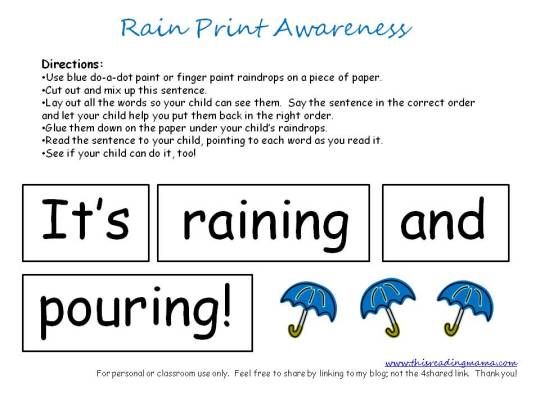

The first photo is of an activity I found to help students learn print awareness. I don’t know if the creator expects the students to actually know these words yet or not, but it seems to me like this would be a fun activity to complete to teach them about sentences and how they have meaning. Even if the child cannot yet comprehend the words alone, hearing you say them and doing the activity will help them to construct meaning from this sentence and see that there is a purpose behind the text.
The second photo is of a STOP sign, obviously. In Owocki/Goodman Kidwatching Chapter 3 this week, we learned about how one of the earliest forms of print awareness is children understanding what symbols mean. Very young children can recognize things such as labels, brands, and signs such as this stop sign. They begin to see that this symbol—and this word—stands for something and has meaning behind it.
2 notes
·
View notes
Video
youtube
During class on Thursday, our big book happened to be Jump, Frog, Jump! I found a video of a man (with a really bangin getup) reading to a young group of kids. The focus in this video is kind of just on him but I still feel that this is a relevant example of reading like behavior. These kids are finishing the sentences and really getting to experience the story in a dramatic and exciting way. I wish we had gotten to see more of the responses from the kids. I feel that we also might have seen more dramatizing of the book and even some critiquing. I would like to hear from the children as far as what they thought about this book.
4 notes
·
View notes
Link
"What adjustments will we have to makes as teachers to compensate for the loss of this quiet intense concentration, and for the exclusiveness of bed-time story?”
This is something that I have mulled over many times. I find myself burdened by the fact that many young children are not able to...
2 notes
·
View notes
Photo
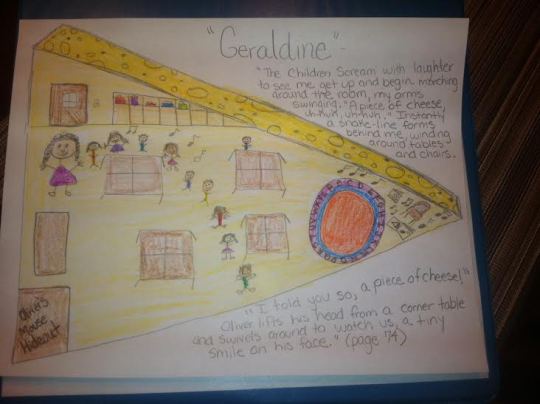
Hey Everyone! So sorry I could not be in class today, I am soo sick. I decided it was better not to spread the love and germs! I was the illustrator for my group this week, so I posted my illustration here so I could still be part of class today! I decided to highlight the chapter “Geraldine”. To me, this was such a paramount point of our reading this week. We are all Geraldine. We all have that passion and drive for something inside of us. Identifying that passion and finding that “muse” is something that is so empowering. I feel like this chapter was the point that Paley and the children had a revelation, and the first time that each and every student identified with the main character. I created the classroom inside a piece of cheese, because I think that Paley’s classroom is the “muse” for both her and the children, as the musical mouse inside the cheese was Geraldine’s muse. The scene with the children dancing around the room and singing with Paley was very vivid to me and was the obvious choice to illustrate for this week!
3 notes
·
View notes
Photo
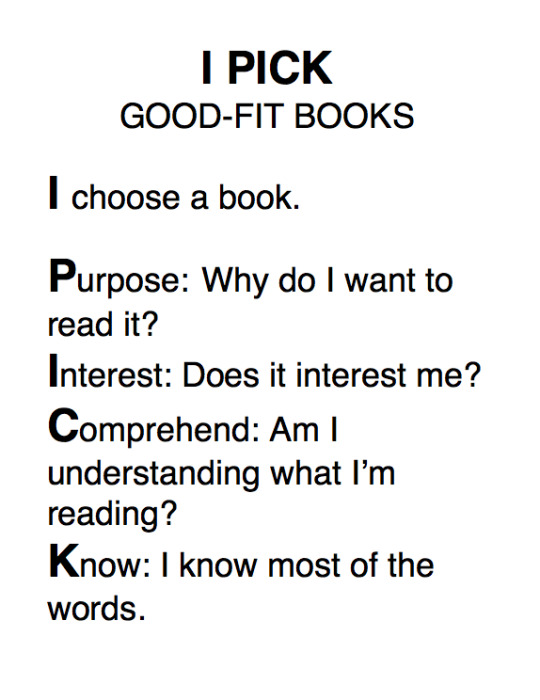
One of the first things we'll think about with our third graders, in addition to their interests, is how to help them thoughtfully self-select books. We'll use the I-PICK model (which appears in the Daily 5 curriculum that you are seeing in some of your practicum placements) as a guide.
2 notes
·
View notes
Quote
Let’s face it, what school usually does is continually interrupt any attempt on the part of children to recapture the highly focused intensity of play. What we need to do is help them—and ourselves—get back on track.
Paley, pg. 76 (via laurenhayman345)
4 notes
·
View notes
Link
From the article:
"Acquiring the habit of turning to books for pleasure or to find out what you want to know does more for reading development than working on decoding words or trying to speed up fluency."
3 notes
·
View notes
Photo
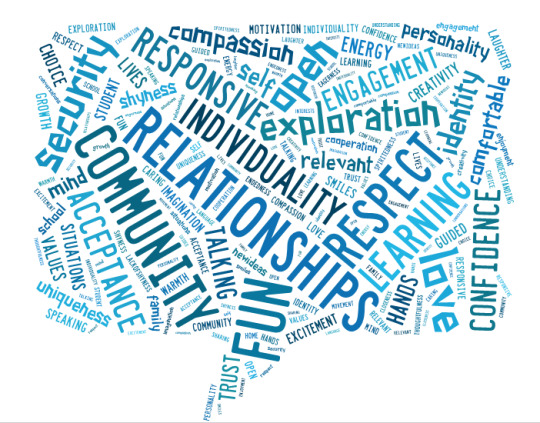
On Thursday, you jotted down keywords that express what it is that you value about teaching and learning. Here is the word cloud that I generated based on your jottings.
The terms in bigger font were those that appeared more frequently across the class. Are there values that you think should be larger? Are there values here that maybe you didn't jot down, but that resonate with you in one way or another?
As we move into curriculum design and reading methods, we have to keep our values in mind - an even more important move amidst "school reform."
13 notes
·
View notes
Link
Well, well, well...
I stumbled across this little article about visual literacy this morning and thought it seemed relevant in light of our recent class discussions. Here are some tips from the article - which is written with parents in mind, but may provide some specific ideas for your classrooms, too.
Here are some questions I might use with elementary school kids, especially with those who assure me they're too old for picture books: • What do you notice in the picture? • Do the words exactly match what's happening in the illustration? • How does that picture/color make you feel? • What does that image remind you of? • How has the illustration changed/progressed from this page to the next? • Do the animals look real? • Why does the cat look sad? • Whose perspective is this illustration from? • How do you think the artist made these illustrations? • Why did the artist choose those colors, and why do they change here?
2 notes
·
View notes
Link
From the article:
"Parents and some teachers believe school administrators overemphasize the assessments, dialing up the pressure on students and creating a “teach to the test” classroom culture that leaves little room for individualized student evaluations, creativity, or critical thought.
Starting with No Child Left Behind and continuing with the Common Core curriculum, student testing has spiked in the last decade. In addition to state assessments, students in some districts are tested as often as once a year on math and reading proficiency; in previous decades, testing typically happened just once in elementary school, middle school, and high school."
1 note
·
View note
